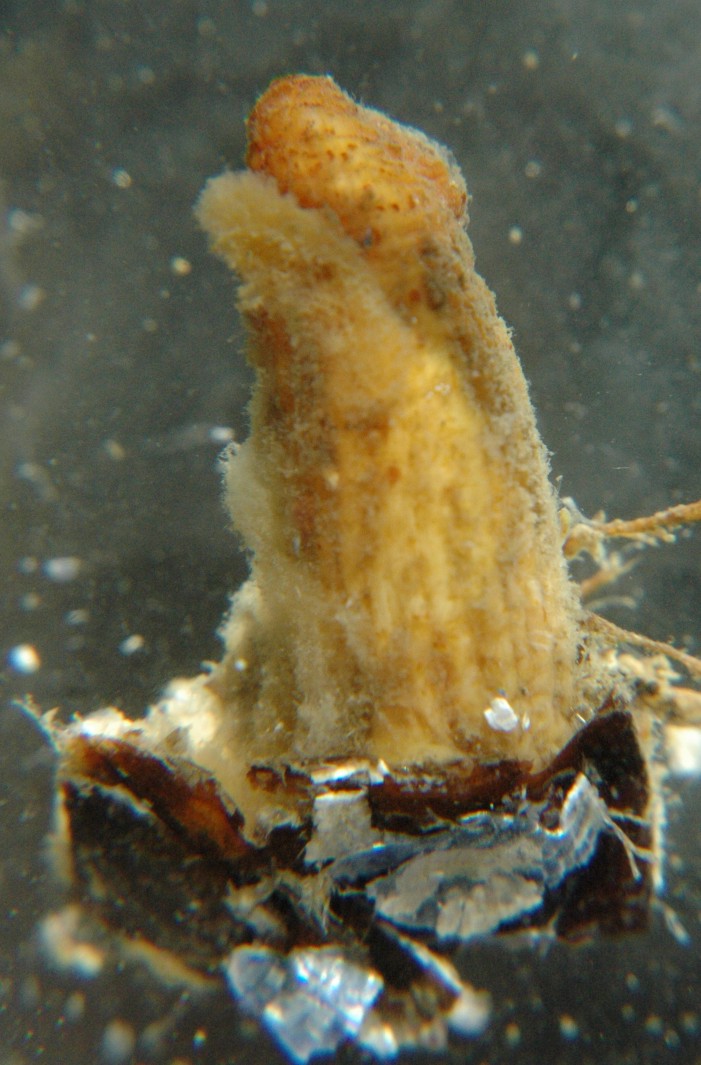How to Distinguish from Similar Species: Styela montereyensis and S. clava have a much more elongated basal stalk. S. plicata is similar in form to S. gibbsi but has large lumps rather than longitudinal wrinkles. S. truncata is up to 3 cm tall and has a yellowish to reddish brown tunic which is smooth unless the animal is contracted. P haustor has lumps as well as wrinkles, red siphon tips, and is often covered with debris.
Geographical Range: Alaska to California
Depth Range: Rare intertidally. Common subtidally
Habitat: Pilings, rocky substrates, stones, or shells, especially often attached to Trichotropis cancellata shells. May aggregate together or be mixed with tunicates of other species.
Biology/Natural History: This species does not brood its larvae.
May be parasitized by the parasitic barnacle
Peltogaster sp or by the parasitic copepods Scolecimorpha
huntsmanni and Enterocola
laticeps. The commensal pea crabs Fabia
subquadrata or Pinnixa
faba may live in the atrial cavity.
| Return to: | |||
| Main Page | Alphabetic Index | Systematic Index | Glossary |
References:
Dichotomous Keys:Carlton, 2007
Flora and Fairbanks, 1966
Kozloff, 1987, 1996
General References:
Johnson and Snook, 1955
Kozloff,
1993
Lamb
and Hanby, 2005
MacGinitie
and MacGinitie, 1949
Scientific Articles:
Web sites:
General Notes and
Observations: Locations,
abundances, unusual behaviors:
Authors and Editors of Page:
Dave Cowles (2009): Created original page
CSS coding for page developed by Jonathan Cowles (2007)
